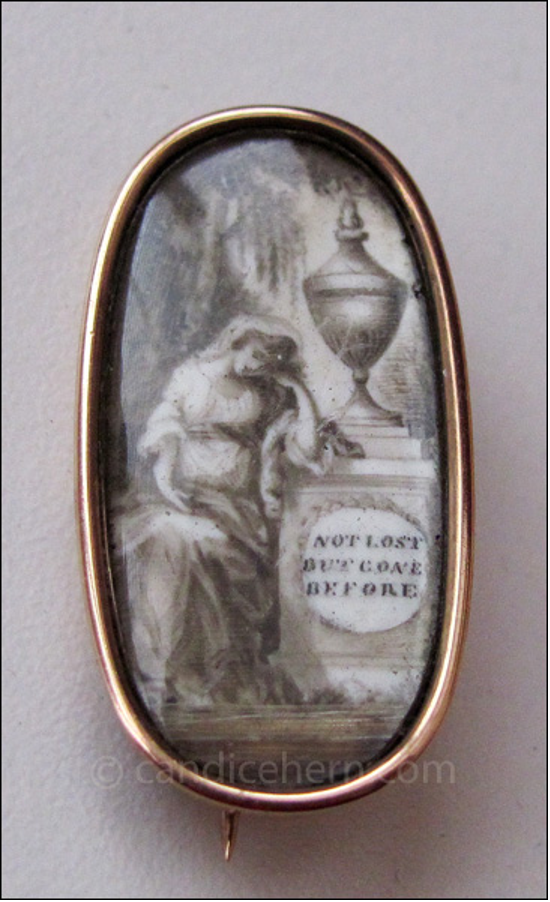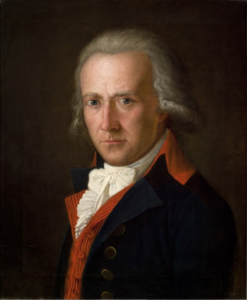Consolation. To Elisa
(Poet's title: Trost. An Elisa)
Set by Schubert:
D 97
[1814]
Lehnst du deine bleichgehärmte Wange
Immer noch an diesen Aschenkrug?
Weinend um den Toten, den schon lange
Zu der Seraphim Triumphgesange
Der Vollendung Flügel trug?
Siehst du Gottes Sternenschrift dort flimmern,
Die der bangen Schwermut Trost verheißt?
Heller wird der Glaube dir nun schimmern,
Dass hoch über seiner Hülle Trümmern
Walle des Geliebten Geist.
Wohl, o wohl dem liebenden Gefährten
Deiner Sehnsucht, er ist ewig dein!
Wiedersehn im Lande der Verklärten,
Wirst du, Dulderin, den Langentbehrten,
Und wie er unsterblich sein.
Are you still leaning your cheek, pale with grief,
Against this jar of ashes? Still?
Are you still weeping for the departed, he who has long
Been amongst the Seraphim singing of triumph
And has worn the wings of salvation?
Can you see there God’s writing in the stars glowing,
Promising consolation to anxious mourners?
Faith is now going to shine more brightly for you
Since high above his external, mortal remains
His beloved spirit surges!
Blessings on your beloved companion.
The object of your longing is yours for ever!
You will see him again in the land of the enlightened
Oh suffering one, you will see the one you miss so much
And, like him, you will be immortal!
All translations into English that appear on this website, unless otherwise stated, are by Malcolm Wren. You are free to use them on condition that you acknowledge Malcolm Wren as the translator and schubertsong.uk as the source. Unless otherwise stated, the comments and essays that appear after the texts and translations are by Malcolm Wren and are © Copyright.
☙
It is unlikely that Elisa actually kept her lover’s ashes in an urn and moped with them. This is a pose inherited from antiquity and commonly portrayed on funerary monuments (particularly those in neo-classical style), but it is in essence symbolic rather than representational. Its presence on marble tombs conveys the idea of unchanging and unceasing loss, but its classical origins are in tension with its use in Christian churches and graveyards and it overlooks the need for healing and hope. It might help at one stage of the mourning process, but other imagery will be needed in order to overcome rather than just wallow in our grief.
However, physical vestiges are usually crucial in helping the bereaved move to a more ‘spiritual’ understanding of their loss. This is particularly the case when loved ones have died suddenly or violently (in accidents or wars), and those left behind are said to have difficulty finding ‘closure’ if no trace of the victim can be found and restored to them. In this way, the ‘ashes’ are a necessary stage and there will be no point talking about ‘wings’ or ‘shining up above’ unless we can accept that death has really occurred.

Inscription on urn plinth reads, “Not lost but gone before.” c. 1780
https://candicehern.com/regencyworld/georgian-mourning-brooches/mourning1/
☙
Original Spelling Trost. An Elisa Lehnst du deine bleichgehärmte Wange Immer noch an diesen Aschenkrug? Weinend um den Todten, den schon lange Zu der Seraphim Triumphgesange Der Vollendung Flügel trug? Siehst du Gottes Sternenschrift dort flimmern, Die der bangen Schwermuth Trost verheißt? Heller wird der Glaube dir nun schimmern, Daß hoch über seiner Hülle Trümmern Walle des Geliebten Geist! Wohl, o wohl dem liebenden Gefährten Deiner Sehnsucht, er ist ewig dein! Wiedersehn, im Lande der Verklärten, Wirst du, Dulderin, den Langentbehrten, Und wie er unsterblich seyn!
Confirmed by Peter Rastl with Schubert’s source, Gedichte von Matthisson. Neueste verbesserte Auflage. Wien und Prag bey Franz Haas 1810. page 165; with Gedichte von Friedrich von Matthisson. Erster Theil. Tübingen, bei Cotta, 1811, page 90, and with Friedrich von Matthisson, Gedichte, fifteenth edition, Zurich: Orell, Fuessli & Co., 1851, page 63.
First published in Musen-Almanach für 1786, herausgegeben von Voß und Goeking, Hamburg, bey Carl Ernst Bohn, pages 24-25, with the title “Die Unsterblichkeit” (Immortality), subtitle “An Elisa”. This first edition has an additional (third) stanza which was left out in later editions.
To see an early edition of the text, go to page 165 [173 von 296] here: http://digital.onb.ac.at/OnbViewer/viewer.faces?doc=ABO_%2BZ169509602


